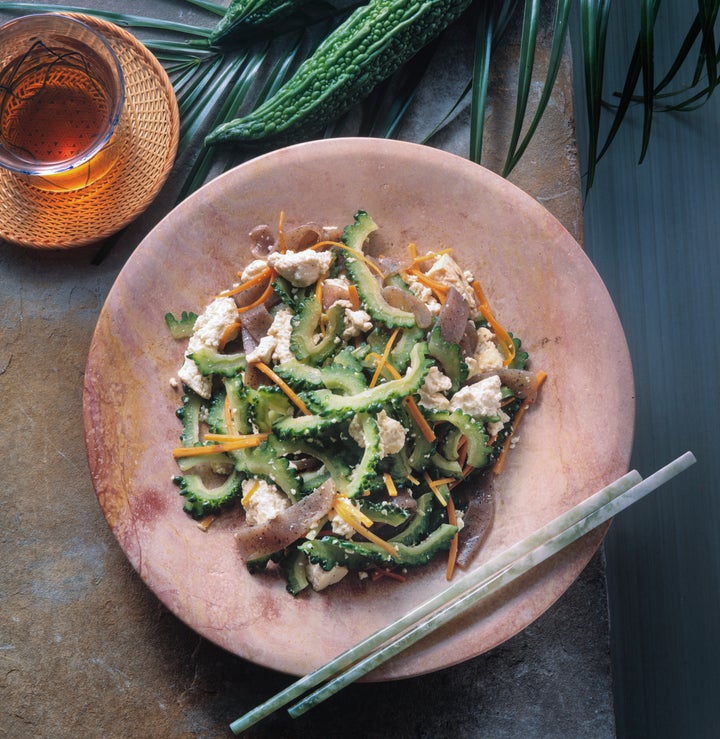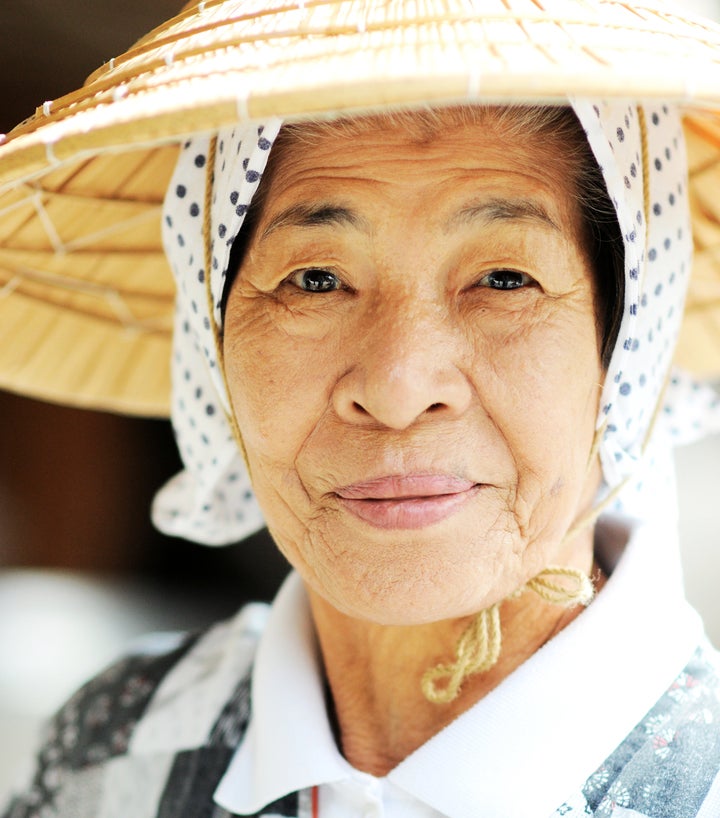
South of mainland Japan lies Okinawa, a group of islands known as the “land of the immortals.” Residents here have among the longest life spans and the islands have the highest rates of centenarians in the world. Two-thirds of those who reached 100 were still living independently at the age of 97, according to one study. Okinawans have also been found to have low rates of heart disease, stroke, cancer and diabetes.
As researchers try to understand the reasons for the unusually long and healthy lives of these island residents, they have become convinced that their diet is a key component.
The traditional local diet ― rich in vegetables, soy products and seafood ― was highlighted by scientists from the Eat-Lancet Commission in January as one that closely resembled their “planetary health diet”: guidelines for a diet that works well for human health and for reducing the environmental impact of our food choices.
Widely used foods in Okinawa include sweet potatoes, green leafy or yellow root vegetables, tofu, bitter melon and modest amounts of seafood, lean meat, fruit and tea. A typical meal might be miso soup, vegetable stir-fry with a side dish of seaweed and an accompaniment of freshly brewed jasmine tea.
Overall, it is a low-calorie, high-carbohydrate ― mainly due to the sweet potatoes ― moderate-protein and nutrient-rich diet, with sparse amounts of meat, refined grains, sugar and dairy. And one that has made Okinawans typically shorter and leaner, with one study finding that the ratio of protein to carbohydrates in the Okinawan diet (1:10) is nearly identical to the ratios in diets found to optimize life span.

Dietitian Shelley Maniscalco, president of the consultancy Nutrition on Demand, said Okinawan eating habits have many strengths, even if she doesn’t suggest people follow the exact diet.
“It’s high in fruits and vegetables which we know confer many health benefits ― likely more than we even know at this time; it’s high in plant protein; contains seafood; and is rich in whole grains. These qualities are consistent with what we know to be a dietary pattern that encourages health and longevity,” she said.
In contrast, the typical U.S. diet lacks dietary fiber and a number of other nutrients. It also contains too much saturated fat, cholesterol, sugar and salt. While many Okinawans practice what is called hara hachi bu, which means eat until you are 80 percent full, many Americans consume a high number of calories. This kind of diet increases the risk of obesity and age-associated diseases including heart disease, cancers and Type 2 diabetes.
People don’t have to switch over completely to the Okinawan diet to gain the health benefits. “The important thing to remember is that we can adapt underlying principles of another culture’s cuisines to our own regional diets,” said Whitney Linsenmeyer, a spokeswoman for the U.S. Academy of Nutrition and Dietetics. “In other words, someone trying to follow the Okinawan diet may have a hard time finding the plentiful fish and native vegetables of Okinawan cuisine in a landlocked state, but can generally adapt the principles of a diet rich in green, leafy vegetables and lean protein.”
But, even so, moving our diets closer to this kind of diet is beyond many Americans at present, said Maniscalco, either out of choice or food insecurity.
“To me, the real issue in helping individuals move toward healthier dietary patterns is the blatant disconnect between what people know and what they do. The reasons for this disconnect are diverse and essentially different for everyone, but will include cost for some, availability for others, and a lot of practical issues for most such as time, perceived difficulty, competing priorities,” she said.
And while there are an estimated 40 million Americans who are struggling to afford the food they need to eat on a daily basis, following a healthy diet like the Okinawan one can be done on a budget, said Melissa Halas-Liang, dietitian and media representative for the California Academy of Nutrition and Dietetics.
“I’ve done meal planning for college students with costs less than a $1.50 per meal,” she said.
As well as diet, researchers say we also must remember not to overlook other factors that undermine healthy longevity including a lack of physical activity and high alcohol intake ― the Okinawan diet includes a physically active life and the occasional consumption of locally brewed brandy.
Another much-discussed factor in explaining the long and healthy lives of the Okinawan population is well-being and purpose.
“Social role and sense of belonging are seen as important as people get older. In each of the world’s so-called blue zones these strong social networks are a big part. It’s difficult to quantify that, but certainly people who have stronger networks and who feel they have a role appear to suffer less from age-related diseases,” said professor John Mathers, a director of the Institute for Ageing and Health at Newcastle University.
For now, though, well-being remains a less-discussed predictor in comparison to diet. “This may be due to the fact that diet is a relatively tangible measure of health, whereas the influence of social networks or gratitude may be harder to measure,” Linsenmeyer said.
It will also never be a substitute for a healthy diet, said Halas-Liang.
“It’s important to connect and feel part of something bigger than yourself, making a difference, feeling like part of a community and sharing and growing with others. But if you’re doing all this while drinking a liter of soda a day or sitting at a desk job and not moving after it, it’s probably not going to enable you to feel your best or have the energy to connect,” she said.
For more content and to be part of the “This New World” community, follow our Facebook page.
HuffPost’s “This New World” series is funded by Partners for a New Economy and the Kendeda Fund. All content is editorially independent, with no influence or input from the foundations. If you have an idea or tip for the editorial series, send an email to thisnewworld@huffpost.com
